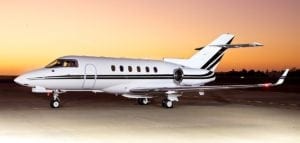 Purchasing an aircraft is a significant investment, and the decision on whether to acquire one is a decision that requires research and planning. In this post, I will walk you through the three most common aircraft ownership mistakes I have observed throughout my 20+ years in aviation and what you can do to avoid them.
Purchasing an aircraft is a significant investment, and the decision on whether to acquire one is a decision that requires research and planning. In this post, I will walk you through the three most common aircraft ownership mistakes I have observed throughout my 20+ years in aviation and what you can do to avoid them.
1. Make sure you really can afford to purchase an aircraft.
The most frequent mistake I’ve seen in aircraft ownership is underestimating total operating costs. Often, people who charter frequently and then decide to become owners believe if they acquire an aircraft, they’ll offset the costs enough by putting it on a charter certificate to actually pay for the entire plane.
While placing an aircraft on a charter certificate will absolutely offset costs, the fixed costs are still significantly above what charter revenue can provide. It is essential that prospective owners do their homework to determine what the fixed and variable costs of ownership will be. A good, in depth analysis of all associated costs of aircraft ownership is the first thing that potential owners should do before purchasing.
2. Explore your tax options.
Did you know that tax laws allow for mitigated or entirely eliminated sales tax in acquisition of jet assets? In California, for example, sales tax is waived on the acquisition of the aircraft if certain exemption strategies are implemented and accomplished. These tax strategies must be in place for the first year of use. The aircraft is exempt from State sales tax if the owner uses one of three eligible exemption strategies;
Aircraft is kept out of the state of California for one year – This is usually not the best idea and the owner may be subject to taxes from the state in which the aircraft is kept.
Interstate Commerce Exemption – The aircraft is used for business purposes and flown crossing state lines over 51% of it’s use for the first six months of ownership.
Common Carriage exemption – The aircraft is operated on a Part 135 Charter certificate over 51% of the first year.
While the tax laws are not complicated, they are very specific – the order of events must happen according to a particular sequence in order to be exempt. It is important to find a reliable tax law expert who can help walk you through the process.
3. Place the aircraft under professional management.
Repeatedly, aircraft owners make the mistake of thinking that a good friend or flight instructor can help manage their jet. While the owners are well-intentioned, those individuals designated for the job aren’t great aircraft managers, with very rare exceptions.
There’s accounting, maintenance and regulatory knowledge required to manage an aircraft asset appropriately. It’s not a good idea to manage the asset yourself or entrust the management of your aircraft to someone who doesn’t have the experience to manage the asset adequately.
Alternatively, an experienced company with multi-faceted expertise in areas like regulatory compliance, maintenance, charter, and flight operations, will help reduce costs, and potentially help an aircraft owner eliminate costly mistakes and delays.
If you have further questions or would like to explore aircraft ownership further, we would be happy to provide you with a complimentary consultation.



